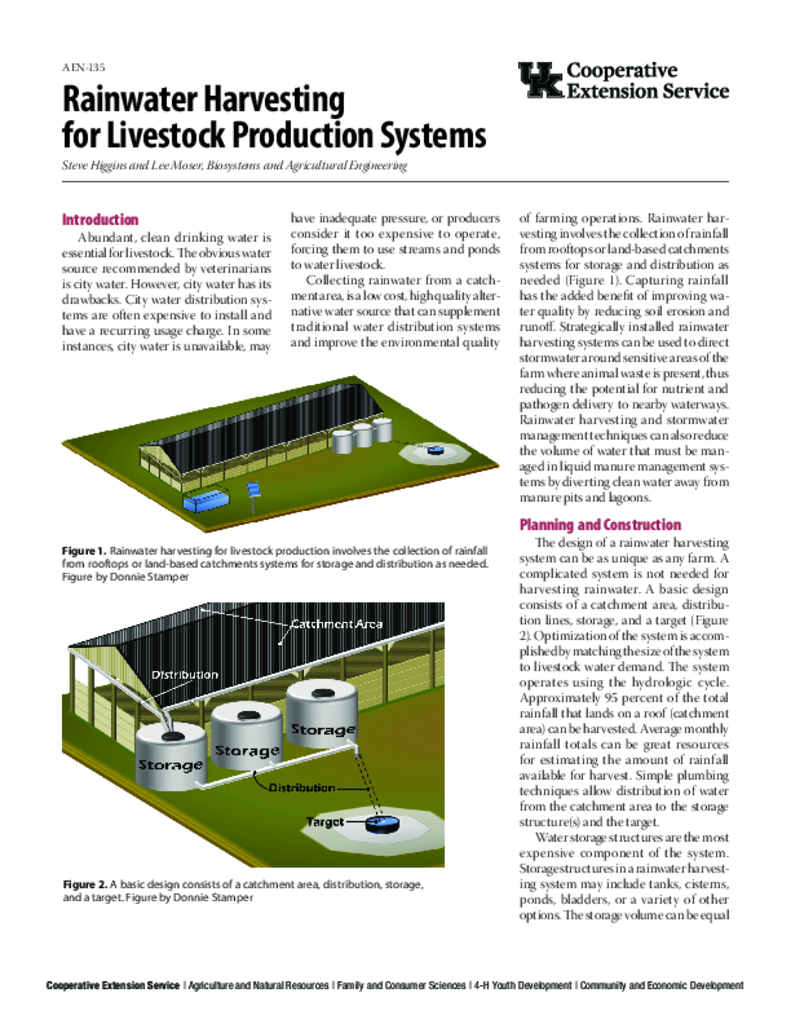Rainwater Harvesting for Livestock Production Systems
Rainwater Harvesting for Livestock Production Systems
Abstract
Abundant, clean drinking water is an essential nutrient for livestock. The obvious water source that is recommended by veterinarians is city water. However, city water has its drawbacks. City water distribution systems are often expensive to install and have a recurring usage charge. In some instances, city water is unavailable, may have inadequate pressure, or producers consider it too expensive to operate, forcing them to use streams and ponds to water livestock. Collecting rainwater from a catchment area, is a low cost, high quality alternative water source that can supplement traditional water distribution systems and improve the environmental quality of farming operations. Rainwater harvesting involves the collection of rainfall from rooftops or land based catchments systems for storage and distribution as needed. Capturing rainfall has the added benefit of improving water quality by reducing soil erosion and runoff. Strategically installed rainwater harvesting systems can be used to direct stormwater around sensitive areas of the farm where animal waste is present, thus reducing the potential for nutrient and pathogen delivery to nearby waterways. Rainwater harvesting and stormwater management techniques can also reduce the volume of water that must be managed in liquid manure management systems by diverting clean water away from manure pits and lagoons.
Core Details
Publication Date
November 7, 2017
Categorical Details
© 2025 University of Kentucky, Martin-Gatton College of Agriculture, Food and Environment

